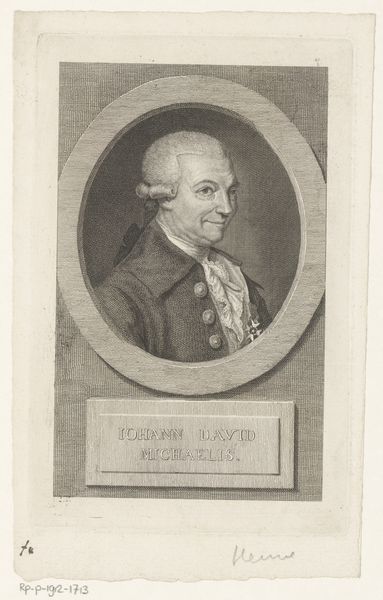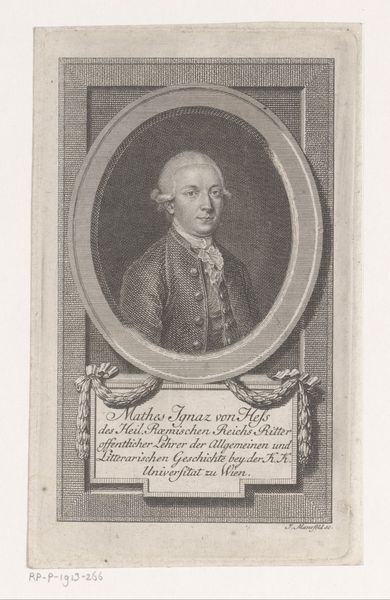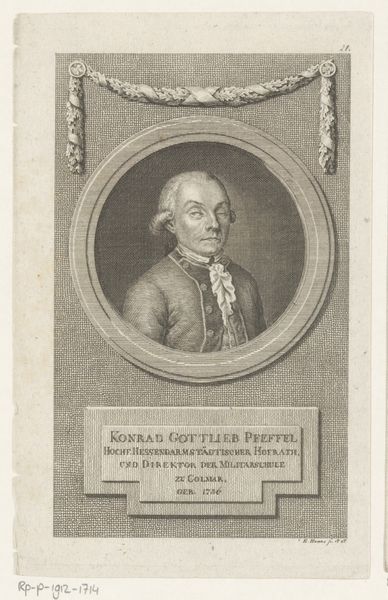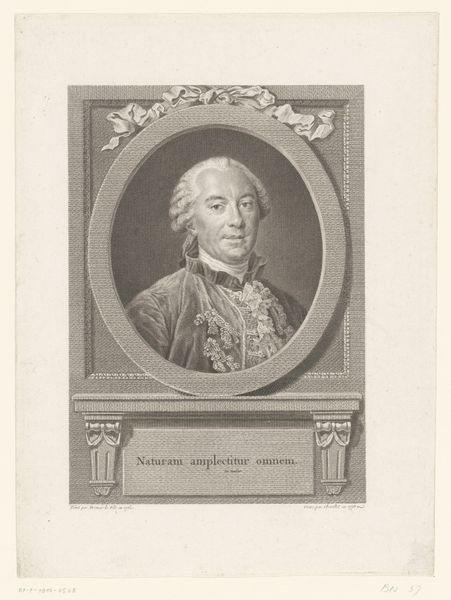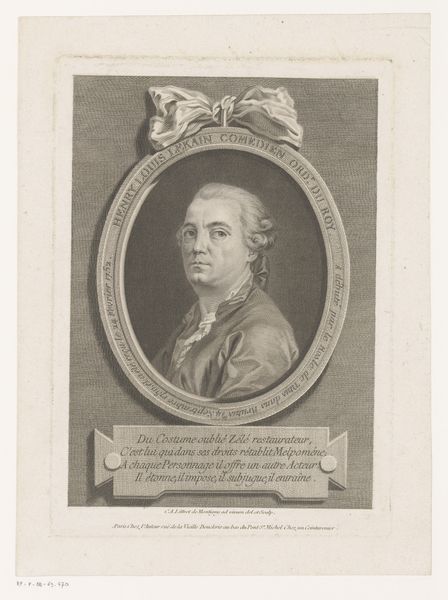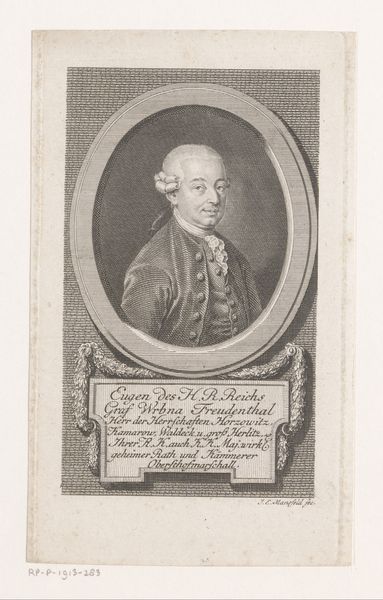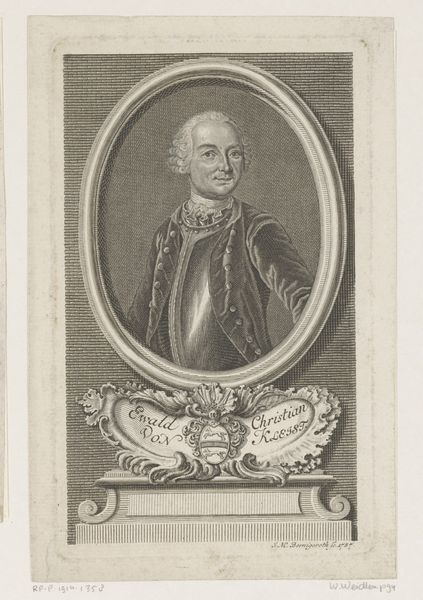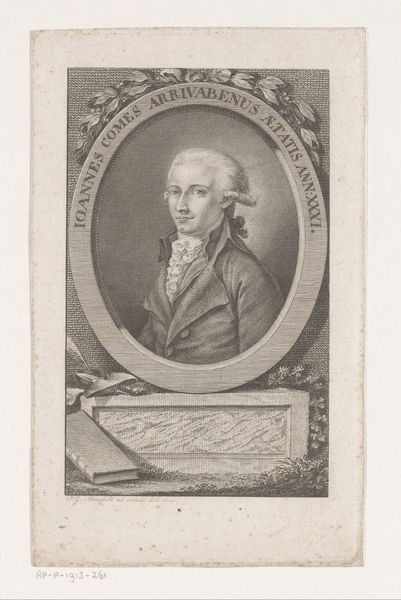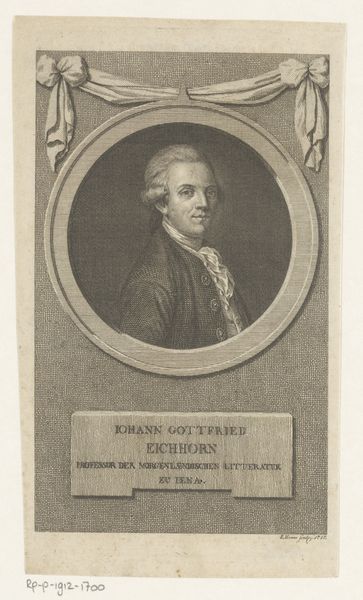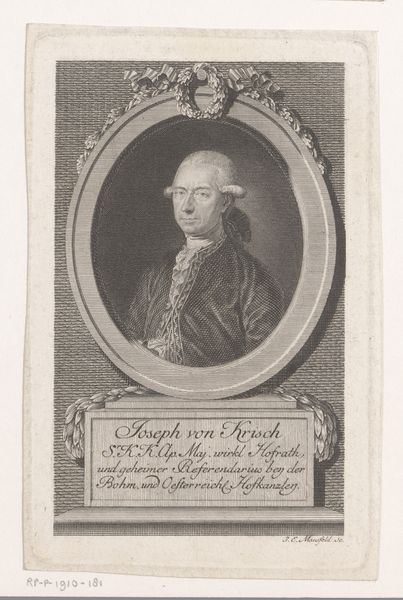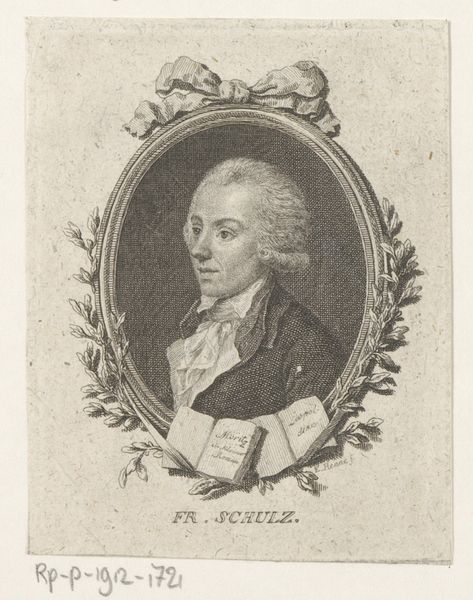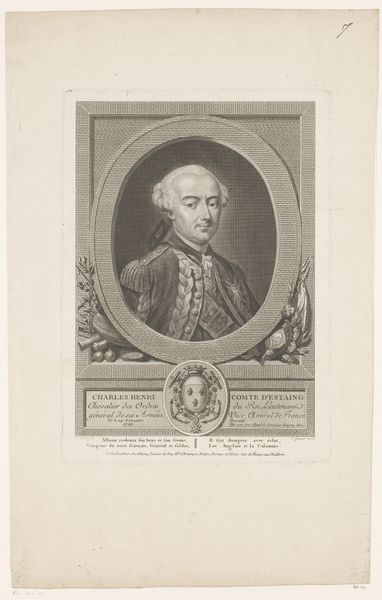
Dimensions: height 197 mm, width 156 mm
Copyright: Rijks Museum: Open Domain
Editor: So, here we have a portrait of Johann Ernst Justus Müller, an engraving from between 1760 and 1795, attributed to Christian Gottlieb Geyser and held at the Rijksmuseum. It's a fairly formal depiction, framed by elaborate decorations. I'm struck by the level of detail the artist was able to achieve using engraving. What do you make of it? Curator: I'm fascinated by how portraits such as these become symbols of status and identity. Think about the recurring visual vocabulary: the oval frame, the decorative elements… What cultural memory do you think this specific arrangement evokes? Does it remind you of anything in particular? Editor: It reminds me a little bit of Roman cameos. It’s quite grand and definitely meant to project power. Curator: Exactly. The artistic decision to frame Müller in this way is very deliberate. It borrows from the visual language of antiquity, imbuing him with a sense of timeless importance and associating him with intellectual pursuits and power. How do you interpret the symmetrical arrangement of ribbons and rosettes around the frame, for example? Editor: Well, symmetry often implies order and balance, but also tradition. They emphasize the subject’s adherence to social norms. Curator: Precisely. It suggests a carefully constructed public image, doesn’t it? Beyond simple aesthetics, each component reinforces the subject's place within a particular societal hierarchy and ideology. Editor: It's incredible how much can be conveyed through seemingly simple visual choices! Curator: Indeed. And this piece offers an opportunity to consider how these visual languages evolved and persist, constantly shaping how we understand ourselves and others even today. Editor: It really gives me a new appreciation for the language of symbols in art and its role in shaping historical and cultural memory. Thanks for the insightful breakdown!
Comments
No comments
Be the first to comment and join the conversation on the ultimate creative platform.

